
St. Augustine: The Ancient City of Florida
Discover St. Augustine, Florida's oldest city, where history, culture, and natural beauty converge to create an unforgettable travel experience.
Welcome to St. Augustine, the oldest continuously inhabited European-established settlement in the continental United States. Founded in 1565 by Spanish explorers, this charming city is rich in history and culture, offering visitors a unique glimpse into the past while providing plenty of modern-day attractions. St. Augustine is renowned for its beautifully preserved historic sites, such as the Castillo de San Marcos, a 17th-century fortress overlooking the Matanzas Bay. Wander through the cobblestone streets of the historic district, where centuries-old buildings now house quaint shops, gourmet restaurants, and fascinating museums. Beyond its historical allure, St. Augustine boasts stunning natural beauty. Enjoy the pristine beaches of Anastasia State Park, or take a scenic boat tour along the Matanzas River. With its blend of history, culture, and natural splendor, St. Augustine is a must-visit destination for any traveler.
Local tips in St. Augustine
- Visit the Castillo de San Marcos early in the morning to avoid crowds and enjoy the serene views.
- Take advantage of the free parking at the Old Town Trolley Welcome Center and use the trolley for easy transportation around the city.
- Don't miss the St. Augustine Lighthouse for breathtaking views and a bit of maritime history.
- Explore the St. George Street pedestrian-only area for unique shopping and dining experiences.
- Try the local cuisine, especially the seafood; restaurants here often serve fresh catches from the nearby Atlantic Ocean.
St. Augustine: The Ancient City of Florida
Welcome to St. Augustine, the oldest continuously inhabited European-established settlement in the continental United States. Founded in 1565 by Spanish explorers, this charming city is rich in history and culture, offering visitors a unique glimpse into the past while providing plenty of modern-day attractions. St. Augustine is renowned for its beautifully preserved historic sites, such as the Castillo de San Marcos, a 17th-century fortress overlooking the Matanzas Bay. Wander through the cobblestone streets of the historic district, where centuries-old buildings now house quaint shops, gourmet restaurants, and fascinating museums. Beyond its historical allure, St. Augustine boasts stunning natural beauty. Enjoy the pristine beaches of Anastasia State Park, or take a scenic boat tour along the Matanzas River. With its blend of history, culture, and natural splendor, St. Augustine is a must-visit destination for any traveler.
When is the best time to go to St. Augustine?
Iconic landmarks you can’t miss
Castillo de San Marcos National Monument
Explore the Castillo de San Marcos, a historic fortress offering breathtaking views and rich tales of St. Augustine's past.
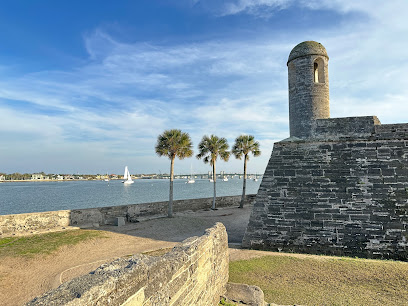
St. Augustine Lighthouse & Maritime Museum
Uncover the maritime history at St. Augustine Lighthouse & Maritime Museum, where history meets breathtaking ocean views in Florida's oldest city.

Old Town Trolley Tours St Augustine
Discover the beauty and history of St. Augustine with Old Town Trolley Tours, your gateway to the nation's oldest city.

Ponce de Leon's Fountain of Youth Archaeological Park
Experience the legendary Fountain of Youth in St. Augustine, a captivating archaeological park blending history, nature, and enchanting tales.

Old Jail Museum
Discover the intriguing stories of St. Augustine's past at the Old Jail Museum, a historical landmark that brings history to life.
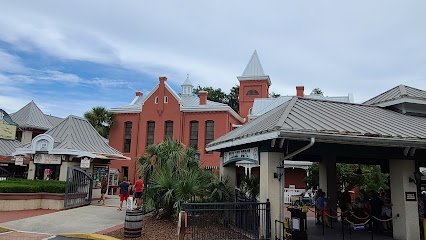
St. Augustine Pirate & Treasure Museum
Uncover the thrilling tales of piracy at the St. Augustine Pirate & Treasure Museum, where history and adventure intertwine in every exhibit.

Cathedral Basilica of St. Augustine
Discover the architectural splendor and rich history of the Cathedral Basilica of St. Augustine, a cultural and spiritual landmark in Florida's oldest city.
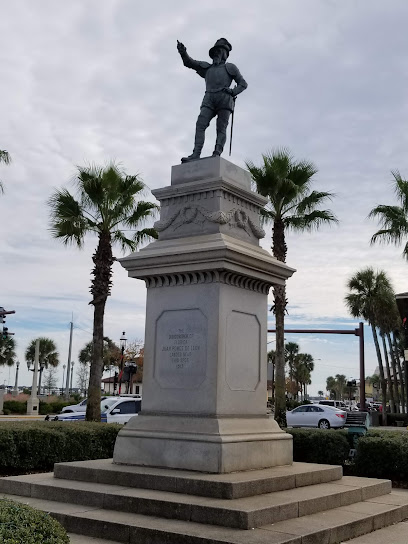
Medieval Torture Museum
Explore the chilling and fascinating history of medieval justice at the Medieval Torture Museum in St. Augustine, Florida.

Potter's Wax Museum
Experience the magic of lifelike wax figures at Potter's Wax Museum in St. Augustine, Florida, where history and entertainment come alive.

Bridge of Lions
Discover the historic Bridge of Lions, an architectural gem in St. Augustine, offering stunning views and a glimpse into the city's rich heritage.

Ghosts & Gravestones Tour St. Augustine
Explore the haunted history of St. Augustine with a spine-chilling Ghosts & Gravestones Tour, revealing tales of the supernatural and the city's storied past.

Red Train Tours
Experience the charm of St. Augustine on the iconic Red Train Tours, blending fun and historical insights for an unforgettable adventure.

Fort Mose Historic State Park
Explore the historic Fort Mose Historic State Park, the first free Black settlement in the U.S. Discover nature, culture, and history in beautiful St. Augustine.

Historic St Augustine
Discover the captivating history and rich culture of Historic St. Augustine, a vibrant destination that showcases the charm of the oldest city in the U.S.

Black Raven Pirate Ship
Embark on an unforgettable pirate adventure aboard the Black Raven Ship in St. Augustine, Florida, perfect for families and thrill-seekers alike.

Unmissable attractions to see
Castillo de San Marcos National Monument
Discover the historic Castillo de San Marcos, the oldest masonry fort in the U.S., and immerse yourself in St. Augustine's vibrant past and stunning views.

Castillo de San Marcos National Monument
Explore the Castillo de San Marcos National Monument, a historic fortress in St. Augustine, Florida, rich in history and breathtaking views.

St. Augustine Lighthouse & Maritime Museum
Explore the St. Augustine Lighthouse & Maritime Museum, an iconic historical landmark offering captivating views and rich maritime history in Florida.
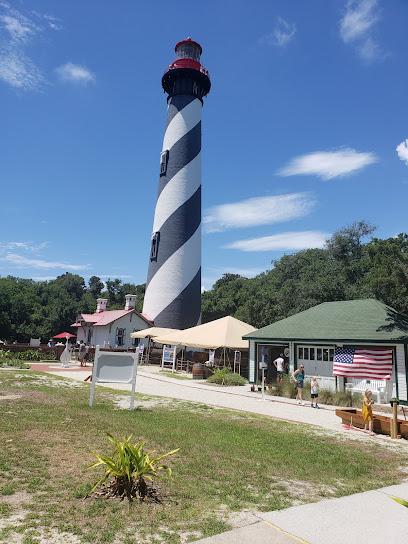
St. Augustine Lighthouse & Maritime Museum
Explore the St. Augustine Lighthouse & Maritime Museum, a historic landmark showcasing Florida's maritime heritage and stunning coastal views.

St. Augustine Alligator Farm Zoological Park
Discover the thrilling world of reptiles and wildlife at St. Augustine Alligator Farm, a premier zoo and tourist attraction in Florida.

St. Augustine Alligator Farm Zoological Park
Explore the St. Augustine Alligator Farm Zoological Park, a unique wildlife experience showcasing alligators, exotic birds, and conservation efforts in a lush setting.

Old Town Trolley Tours St Augustine
Experience St. Augustine's rich history and stunning sights with Old Town Trolley Tours - the best way to explore America's oldest city.

Old Town Trolley Tours St Augustine
Experience the history and charm of St. Augustine through the convenient and informative Old Town Trolley Tours, the best way to explore this beautiful city.

Ripley's Believe It or Not!
Explore the bizarre and extraordinary at Ripley's Believe It or Not! in historic St. Augustine, a unique attraction for all ages.
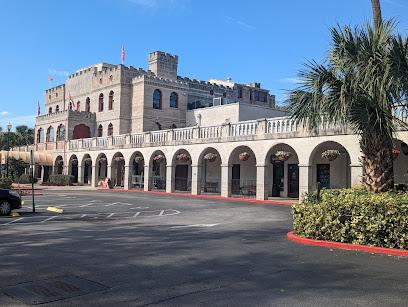
Ripley's Believe It or Not!
Explore the bizarre and extraordinary at Ripley's Believe It or Not! in St. Augustine, a must-visit attraction for curious travelers.

The Escape Game Jacksonville
Experience the thrill of adventure and teamwork at The Escape Game Jacksonville, where every puzzle leads to unforgettable memories.

Ponce de Leon's Fountain of Youth Archaeological Park
Explore the legendary site of Ponce de Leon's Fountain of Youth in St. Augustine, a captivating blend of history and nature awaits!
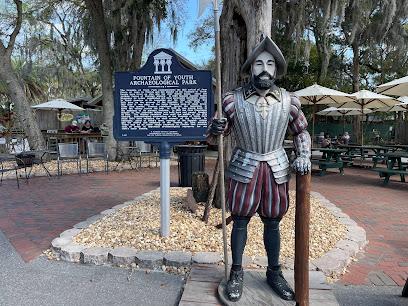
Ponce de Leon's Fountain of Youth Archaeological Park
Explore St. Augustine's historic charm at Ponce de Leon's Fountain of Youth Archaeological Park, where history and legends intertwine in a beautiful natural setting.

Old Jail Museum
Explore the Old Jail Museum in St. Augustine, Florida: A historical landmark revealing the intriguing stories of 19th-century prisoners.

Anastasia State Park
Discover the beauty of Anastasia State Park in St. Augustine, Florida, where nature, wildlife, and adventure await you.

Essential places to dine
Harry's Seafood, Bar & Grille
Experience exquisite Cajun seafood and live music at Harry's Seafood, Bar & Grille in historic St. Augustine.
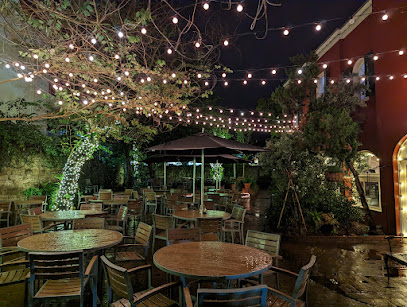
Columbia Restaurant
Experience authentic Spanish and Cuban flavors at Columbia Restaurant in St. Augustine's Historic District—a culinary landmark steeped in tradition.

Prohibition Kitchen
Experience the best of St. Augustine's culinary scene at Prohibition Kitchen - where tradition meets innovation in every bite.

Cap's On the Water
Discover Cap's On the Water - St. Augustine's premier seafood destination offering fresh catches and stunning waterfront views.

The Conch House Restaurant
Experience coastal dining at The Conch House Restaurant in St. Augustine – savor fresh seafood with Caribbean flair in a beautiful waterfront setting.

Meehan's Irish Pub & Seafood House
Discover delicious Irish dishes and fresh seafood at Meehan's Irish Pub & Seafood House in St. Augustine's historic district.

Ice Plant Bar
Discover the flavors of St. Augustine at Ice Plant Bar, where fresh ingredients meet artisanal craftsmanship in a historic setting.

O'Steen's Restaurant
Experience fresh seafood at O'Steen's Restaurant in St. Augustine - where every dish captures the essence of Florida's coastal flavors.

Aunt Kates
Experience delightful seafood and stunning views at Aunt Kate's, the perfect family-friendly restaurant in St. Augustine.

One Twenty Three Burger House
Discover gourmet burgers in St. Augustine's Lincolnville at One Twenty Three Burger House - where flavor meets creativity.

Pizzalley's Chianti Room
Experience the authentic taste of Italy at Pizzalley's Chianti Room in St. Augustine's historic district - where every meal is a celebration.
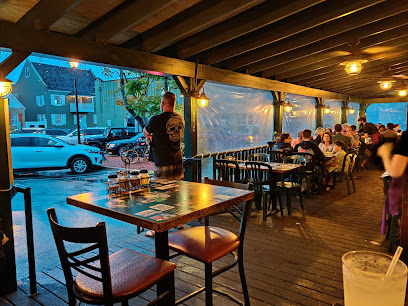
The Floridian Restaurant
Experience authentic Southern cuisine at The Floridian Restaurant in St. Augustine—where barbecue meets hospitality!

O C White's Seafood & Spirits
Experience fresh seafood and local flavors at O C White's Seafood & Spirits in St. Augustine - where culinary excellence meets stunning waterfront views.

A1A Ale Works Restaurant & Taproom
Discover flavorful dining at A1A Ale Works Restaurant & Taproom in St. Augustine - where great food meets local craft brews.

Hurricane Patty's
Discover fresh seafood delights at Hurricane Patty's, where St. Augustine's coastal charm meets vibrant flavors in a welcoming atmosphere.

Markets, malls and hidden boutiques
Earthbound Trading Co.
Explore the eclectic offerings of Earthbound Trading Co. in St. Augustine, where unique fashion meets sustainable sourcing in a charming historic setting.
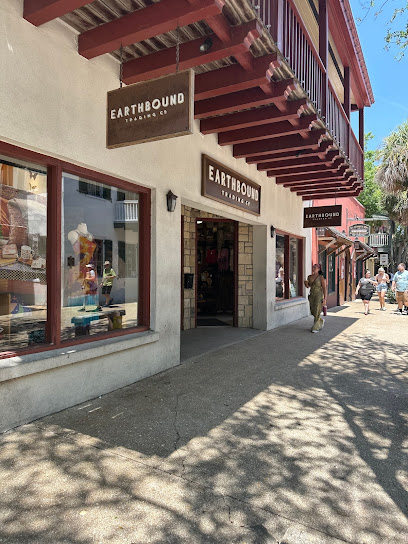
Fountain of Youth Gift Shop
Explore the Fountain of Youth Gift Shop for unique souvenirs and local crafts in St. Augustine, celebrating the rich culture of Florida.

Artsy Abode
Explore Artsy Abode in St. Augustine for unique gifts, boutique fashion, and exquisite jewelry that celebrate local artistry.

Aunt Matilda's Steampunk Trunk
Explore a whimsical world at Aunt Matilda's Steampunk Trunk, St. Augustine's unique gift shop filled with creative treasures and steampunk wonders.

Antiques & Things
Explore a captivating collection of vintage treasures, rare coins, and unique jewelry in the heart of historic St. Augustine.

Golden Gypsy
Explore the enchanting Golden Gypsy, where art, jewelry, and metaphysical wonders collide in St. Augustine's historic heart.

Souvenir City
Discover unique mementos and local treasures at Souvenir City in St. Augustine, a must-visit for every traveler seeking a piece of history.

The Irish Gift Shop
Explore authentic Irish gifts in the heart of St. Augustine's Historic District at The Irish Gift Shop.

Shell Shop-Sunburst Trading Co
Explore Shell Shop-Sunburst Trading Co in St. Augustine for unique coastal-themed gifts and local artisan treasures that capture the essence of Florida.

Red Pineapple
Explore Red Pineapple in St. Augustine for unique gifts that capture the spirit of Florida's historic charm and artisan culture.

Cool and Collected Vintage & Antiques
Explore a captivating collection of vintage clothing and antiques in the heart of St. Augustine's Historic District, perfect for treasure hunters and history buffs alike.

Around the World Market Place
Discover a treasure trove of unique gifts and souvenirs at Around the World Market Place in St. Augustine's Historic District.

WildHeart Boutique LLC
Explore WildHeart Boutique LLC in St. Augustine for unique women's clothing and accessories that embrace style and individuality.

The Pirate Store
Experience the whimsical world of The Pirate Store in St. Augustine, where adventure and unique clothing await every treasure hunter.

Gator Bob's Trading Post
Explore Gator Bob's Trading Post for unique souvenirs and local crafts in the heart of St. Augustine's Historic District.
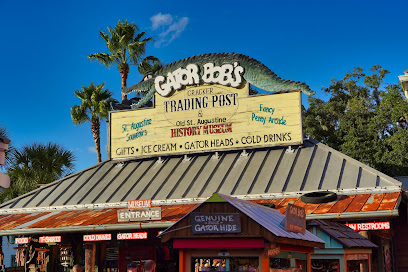
Essential bars & hidden hideouts
Prohibition Kitchen
Experience St. Augustine's vibrant culinary scene at Prohibition Kitchen, a gastropub offering innovative dishes and lively atmosphere.

Meehan's Irish Pub & Seafood House
Discover the best of Irish cuisine and seafood in St. Augustine at Meehan's Irish Pub & Seafood House, where every meal is a taste of tradition.

Ice Plant Bar
Experience the unique charm of Ice Plant Bar, where innovative cocktails and historic ambiance create unforgettable moments in St. Augustine.

A1A Ale Works Restaurant & Taproom
Experience the vibrant flavors and craft brews of A1A Ale Works Restaurant & Taproom in historic St. Augustine, a true culinary destination.

The Tini Martini Bar
Discover the elegance of The Tini Martini Bar in St. Augustine, where exquisite cocktails meet a stylish atmosphere.

Scarlett O'Hara's
Discover the lively ambiance of Scarlett O'Hara's, a premier pub in St. Augustine's Historic District offering delicious food and great drinks.

No Name Bar
Discover No Name Bar in St. Augustine: a lively bar and grill offering delicious food, refreshing drinks, and a vibrant atmosphere in the heart of the Historic District.
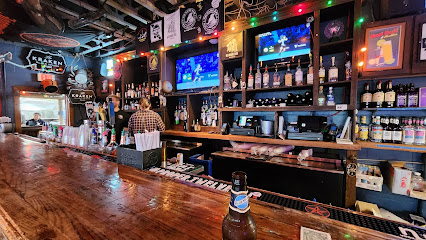
Barley Republic
Experience the perfect blend of Irish hospitality and local flavors at Barley Republic in the heart of St. Augustine's Historic District.

Trade Winds Lounge
Discover the lively Trade Winds Lounge in St. Augustine, a cocktail bar offering a unique blend of local flavors and vibrant atmosphere.

Forgotten Tonic
Experience the vibrant culinary scene at Forgotten Tonic in St. Augustine, where exceptional cocktails and exquisite dishes await.

Odd Birds Cocktail Lounge and Kitchen
Discover innovative cocktails and a vibrant atmosphere at Odd Birds Cocktail Lounge and Kitchen in St. Augustine, Florida.

Stogies Jazz Club & Listening
Experience the best of live jazz, premium cigars, and a welcoming atmosphere at Stogies Jazz Club & Listening in St. Augustine.

St. George Tavern
Experience the vibrant flavors and lively atmosphere at St. George Tavern, a local favorite in St. Augustine's Historic District.

Mill Top Tavern and Listening Room
Experience the best of St. Augustine at Mill Top Tavern, where delicious grilled dishes meet vibrant live music in a historic setting.

Ann O'Malley's
Experience the vibrant atmosphere of Ann O'Malley's, a lively bar in St. Augustine's Historic District, offering a diverse drink selection and live music.

Local Phrases
-
- HelloHey y'all
[Hey y'all] - GoodbyeSee ya later
[See ya later] - YesYeah
[Yeah] - NoNah
[Nah] - Please/You're welcomePlease/No problem
[Please/No problem] - Thank youThanks
[Thanks] - Excuse me/SorryPardon me/My bad
[Pardon me/My bad] - How are you?How y'all doin'?
[How y'all doin'?] - Fine. And you?Fine. And you?
[Fine. And you?] - Do you speak English?Ya speak English?
[Ya speak English?] - I don't understandI ain't gettin' ya
[I ain't gettin' ya]
- HelloHey y'all
-
- I'd like to see the menu, pleaseI wanna check out the menu, please
[I wanna check out the menu, please] - I don't eat meatI don't eat meat
[I don't eat meat] - Cheers!Cheers!
[Cheers!] - I would like to pay, pleaseI wanna pay, please
[I wanna pay, please]
- I'd like to see the menu, pleaseI wanna check out the menu, please
-
- Help!Help!
[Help!] - Go away!Go away!
[Go away!] - Call the Police!Call the Cops!
[Call the Cops!] - Call a doctor!Call a doc!
[Call a doc!] - I'm lostI'm lost
[I'm lost] - I'm illI'm sick
[I'm sick]
- Help!Help!
-
- I'd like to buy...I wanna buy...
[I wanna buy...] - I'm just lookingI'm just lookin'
[I'm just lookin'] - How much is it?How much is this?
[How much is this?] - That's too expensiveThat's too pricey
[That's too pricey] - Can you lower the price?Can ya bring the price down?
[Can ya bring the price down?]
- I'd like to buy...I wanna buy...
-
- What time is it?What time is it?
[What time is it?] - It's one o'clockIt's one o'clock
[It's one o'clock] - Half past (10)Half past (10)
[Half past (10)] - MorningMorning
[Morning] - AfternoonAfternoon
[Afternoon] - EveningEvenin'
[Evenin'] - YesterdayYesterday
[Yesterday] - TodayToday
[Today] - TomorrowTomorrow
[Tomorrow] - 11
[1] - 22
[2] - 33
[3] - 44
[4] - 55
[5] - 66
[6] - 77
[7] - 88
[8] - 99
[9] - 1010
[10]
- What time is it?What time is it?
-
- Where's a/the...?Where's a/the...?
[Where's a/the...?] - What's the address?What's the address?
[What's the address?] - Can you show me (on the map)?Can you show me (on the map)?
[Can you show me (on the map)?] - When's the next (bus)?When's the next (bus)?
[When's the next (bus)?] - A ticket (to ....)A ticket (to ....)
[A ticket (to ....)]
- Where's a/the...?Where's a/the...?
History of St. Augustine
-
St. Augustine, the oldest continuously inhabited European-established settlement in the continental United States, was founded on September 8, 1565, by the Spanish admiral Pedro Menéndez de Avilés. The establishment came as a result of Spain's strategic efforts to protect its treasure fleets traveling from the New World to Europe.
-
Constructed between 1672 and 1695, the Castillo de San Marcos is the oldest masonry fort in the continental United States. Built by the Spanish to defend their settlement from pirate raids and British forces, its coquina stone walls have withstood numerous sieges and are a testament to colonial military architecture.
-
In 1763, the Treaty of Paris concluded the Seven Years' War, and Florida was ceded to Great Britain. St. Augustine became the capital of British East Florida. This period saw significant changes including the influx of British settlers, new agricultural practices, and the construction of new buildings.
-
In 1783, the Treaty of Paris ended the American Revolutionary War and returned Florida to Spanish control. This era saw a mixed population of Spanish, British loyalists, freed slaves, and Native Americans. St. Augustine continued to serve as an important military and cultural center for Spain.
-
The second Spanish period lasted from 1784 to 1821, marked by efforts to revitalize agriculture and trade. However, it was also a time of instability due to conflicts with neighboring territories and Native American tribes, culminating in Spain ceding Florida to the United States in 1821.
-
St. Augustine played a significant role in the Seminole Wars, particularly during the Second Seminole War (1835-1842). The city served as a base for U.S. military operations against the Seminole tribes. Fort Marion, originally Castillo de San Marcos, was used to detain Native American prisoners.
-
During the American Civil War, Florida seceded from the Union and joined the Confederacy. St. Augustine was occupied by Confederate forces until March 1862, when Union troops captured the city. The fort, renamed Fort Marion, served as a Union stronghold for the rest of the war.
-
In the late 19th century, Henry Flagler, a co-founder of Standard Oil, transformed St. Augustine into a winter resort for the wealthy. He built several grand hotels, including the Ponce de Leon Hotel, which is now part of Flagler College. This era brought significant economic and cultural development.
-
St. Augustine was a focal point during the Civil Rights Movement in the 1960s. Activists, including Dr. Martin Luther King Jr., led protests against segregation in the city. The events in St. Augustine played a crucial role in the passage of the Civil Rights Act of 1964.
-
In the 20th and 21st centuries, St. Augustine has focused on preserving its rich historical heritage. Many of its historic buildings and landmarks have been restored and are now major tourist attractions. The city continues to celebrate its diverse cultural history through various festivals and events.
St. Augustine Essentials
-
St. Augustine is accessible by car, plane, and train. The nearest major airport is Jacksonville International Airport (JAX), approximately 50 miles to the north. From the airport, you can rent a car or take a shuttle service to St. Augustine. Alternatively, you can fly into Orlando International Airport (MCO), which is about 100 miles south. Amtrak offers train services to nearby Palatka, located about 30 miles west of St. Augustine. Interstate 95 and U.S. Highway 1 provide easy road access to the city.
-
St. Augustine is a walkable city, especially in the historic downtown area. For longer distances, the Sunshine Bus Company offers public bus services throughout St. Johns County. Taxis, ride-hailing services like Uber and Lyft, and bike rentals are also available. For a unique experience, consider using the Old Town Trolley Tours or Ripley’s Red Train Tours, which provide hop-on-hop-off services around the city's main attractions.
-
The official currency in St. Augustine is the U.S. Dollar (USD). Credit cards are widely accepted in hotels, restaurants, and shops. ATMs are plentiful, especially in tourist areas. While some smaller vendors and markets may prefer cash, most establishments accept major credit cards and contactless payment methods.
-
St. Augustine is generally a safe destination for tourists. However, it is advisable to take standard precautions such as avoiding poorly lit areas at night and keeping an eye on your belongings in crowded places. High crime areas targeting tourists are rare, but it's always best to stay vigilant. Areas around the historic district are well-patrolled and considered safe.
-
In case of an emergency, dial 911 for immediate assistance. St. Augustine has several medical facilities, including Flagler Hospital, which provides comprehensive medical services. Pharmacies are available throughout the city for minor health issues. It is recommended to have travel insurance that covers medical emergencies.
-
Fashion: Do wear comfortable clothing and footwear, especially when touring historic sites. Lightweight, breathable fabrics are advisable due to the warm climate. Don't wear revealing clothing in religious sites. Religion: Do respect local customs and traditions. Some historic churches and religious sites may require modest dress. Public Transport: Do be courteous to fellow passengers and follow the rules of the transportation provider. Don't eat or drink on public transport. Greetings: Do greet people with a friendly hello or a handshake. Southerners are known for their hospitality. Eating & Drinking: Do try local delicacies such as fresh seafood and Southern cuisine. Don't forget to tip your servers, as it is customary in the United States.
-
To experience St. Augustine like a local, consider visiting during the off-peak seasons in the spring or fall when the weather is pleasant and crowds are thinner. Explore local farmers' markets for fresh produce and artisanal goods. Engage with locals who are often willing to share stories about the city's rich history. Don't miss lesser-known sites like the St. Augustine Lighthouse & Maritime Museum for a unique perspective on the city’s history.
Trending Landmark in St. Augustine
-
Castillo de San Marcos National Monument
-
St. Augustine Lighthouse & Maritime Museum
-
Old Town Trolley Tours St Augustine
-
Ponce de Leon's Fountain of Youth Archaeological Park
-
Old Jail Museum
-
St. Augustine Pirate & Treasure Museum
-
Cathedral Basilica of St. Augustine
-
Medieval Torture Museum
-
Potter's Wax Museum
-
Bridge of Lions
-
Ghosts & Gravestones Tour St. Augustine
-
Red Train Tours
-
Fort Mose Historic State Park
-
Historic St Augustine
-
Black Raven Pirate Ship
Nearby Cities to St. Augustine
-
Things To Do in Jacksonville
-
Things To Do in Daytona Beach
-
Things To Do in Gainesville
-
Things To Do in Ocala
-
Things To Do in Orlando
-
Things To Do in Tampa
-
Things To Do in Clearwater
-
Things To Do in Hilton Head Island
-
Things To Do in Sebring
-
Things To Do in St. Petersburg
-
Things To Do in Ft. Pierce
-
Things To Do in Beaufort
-
Things To Do in Tallahassee
-
Things To Do in Sarasota
-
Things To Do in Stuart













